Deepening our relationship with the NABERS community
The NABERS + CBD Conference 2020 was 10 times bigger than ever before
In July we celebrated the NABERS and CBD Conference 2020 under the uniting theme of ‘Working together for a sustainable future’. Over 1,000 people tuned in from across Australia and the world. The closure of borders meant that this year, for the first time, our conference was held online. The high attendance and the engagement with the content, both during and post the conference is a promising sign of the growing appetite for action on climate change, waste and water, in this critical ‘decade to deliver’.
The Minister for Energy and Emissions Reduction Angus Taylor, and the NSW Minister for Energy and Environment Matt Kean opened the event. Comedian and presenter Craig Reucassel, host of hit ABC series ‘War on Waste’ and ‘Fight for Planet A: Our Climate Challenge’ then moderated the Conference, bringing a touch of humour to the panel discussions and interviews.
Some of the highlights of the Conference include:
- Leaders panel: ‘Why it takes a village to raise a sustainability nation’ – NABERS Director Carlos Flores, GBCA's CEO Davina Rooney, Better Buildings Partnership's Chair Alicia Maynard, Pro-Invest's Managing Partner Sabine Schaffer and Property Council Australia’s National Policy Manager Francesca Muskovic gave their expert views on strategies to speed up decarbonisation of buildings.
- Breakout sessions: There were masterclasses for Assessors, new NABERS users, as well as deep dives into the Hotels rating, the NABERS Waste platform and the ‘Future of NABERS Energy’ project.
- We announced our ambitious plan to cover 80% of Australia’s built environment in the next 5 years.
While the event was held live, some sessions were pre-recorded at a Sydney studio (with social distancing measures in place). The Conference was both a reunion of long-standing partnerships and old friends, and an opportunity for sustainability professionals to discover NABERS for the first time. Access the conference sessions here.

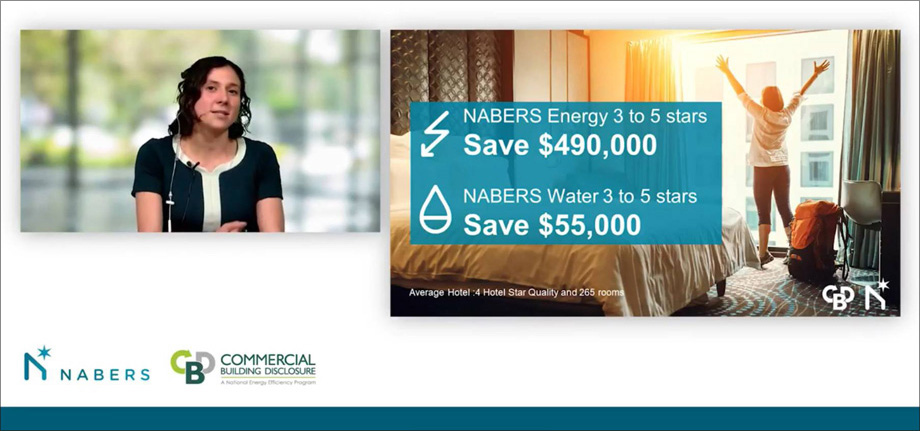
Sustainable Portfolios Index 2020 grew by 48%
In May 2020 we released the second NABERS Sustainable Portfolios Index (SPI) 2020. The Index is Australia’s first publicly available index showcasing the proven environmental performance of building portfolios and funds across the country.
It is the only index in Australia that provides a whole portfolio view of actual performance in reducing emissions, water usage, waste and improving indoor environment quality.
The NABERS Sustainable Portfolios Index 2020 can be used to complement other rigorous indicators of environmental, social and governance (ESG) indicators, such as the Global Real Estate Sustainability Benchmark (GRESB), which investors can use to make informed decision and compare the progress of property portfolios in sustainability.
Whilst other ESG indicators evaluate intention, organisational policy and process, NABERS exclusively showcases achievement against those ESG practices and targets.
We made some improvements so that viewers can now:
- Sort data based on rank, NABERS Star result or number of assets rated
- See the portfolio’s performance over time
- Take a ‘deep dive’ to learn more about a portfolio
- See a Portfolio view on Waste and Indoor Environment achievements
We also partnered with the Net Zero Momentum Tracker to show company commitments to Net Zero, further illustrating the linkage between intention and action.
In FY20, we saw an enthusiastic 48% increase in participation, with a record 40 portfolios disclosing their environmental performance, and received much positive feedback from the finance sector too.
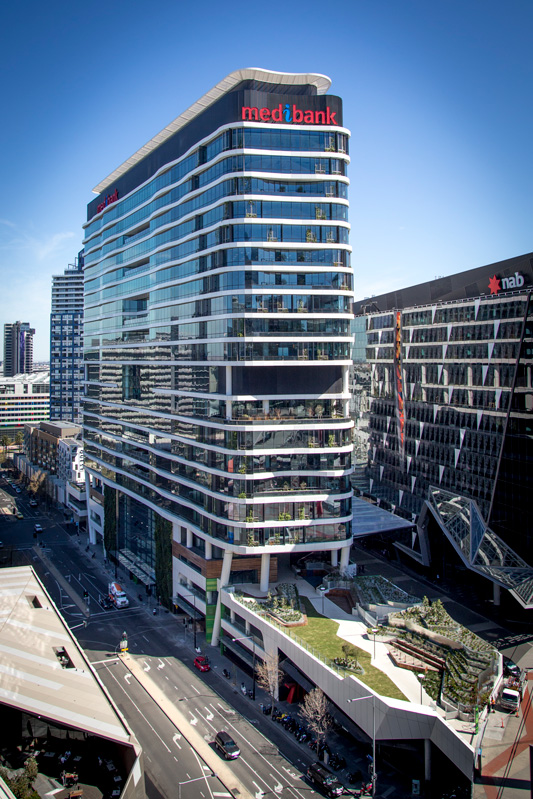
720 Bourke St, Docklands, Victoria is part of the Cbus Property portfolio, the #1 ranked portfolio in the NABERS Sustainable Portfolios Index 2020.
New NABERS method to generate white certificates with the ESS launched
In March 2020, it became much easier for organisations to access finance through the NSW Energy Savings Scheme’s (ESS) with a new and improved NABERS baseline method.
The ESS incentivises investment in energy saving projects. When a business proves that it has reduced its energy use without reducing production or service levels, it can earn Energy Saving Certificates (ESCs). ESCs have a dollar value because electricity retailers and others buy them to meet regulatory obligations based on electricity sold.
Under the new NABERS baseline method, organisations can create ESCs by improving their NABERS Energy rating by 0.5 stars or greater. They can also create three years of ESCs in advance, thereby accessing more money for more upgrades more quickly. ESCs can be generated by any building type for which a NABERS energy rating exists.
This improvement in the baseline method is aligned with our strategic direction in which we empower customers to speed up progress towards environmental goals with easier access to funding using their NABERS ratings.

“As we turn our focus to economic recovery, energy efficiency has a crucial role. Of course, the jobs multiplier for energy efficiency in buildings is very high. But it has other benefits too; it slashes carbon emissions right away, and as our energy system transitions to renewables, ambitious energy efficiency will continue to be crucial because it makes it easier and cheaper to replace our old generators. That’s why we are so lucky to have NABERS here in Australia. As the numbers in this report demonstrate, NABERS is a powerful tool for driving energy efficiency, and it is time to put it to work to help rebuild the Aussie economy.”
Luke Menzel
Chief Executive Officer, Energy Efficiency Council
New and improved learning management system (LMS) launched
This year we launched a new online training platform, providing a better user experience for those participating in NABERS training courses and exams. In line with improving knowledge of NABERS for more people, we have also developed a selection of free courses, resources and webinars that can be accessed by anyone who signs up to the NABERS Learning Platform. The training platform includes introductory courses on our tools, fact sheets and even slide decks that Assessors can use with their customers. This platform will make the continuous professional development of our valued NABERS community easier than ever, wherever they are.

A strong COVID-19 response
We responded to the COVID-19 pandemic by making changes to help our assessors. We published ‘Managing impacts of COVID-19 on NABERS Ratings’ in late March 2020.This document contains amendments, guidance and clarifications to mitigate the impact of existing program requirements, such as site visits, which had become roadblocks to conducting a NABERS Ratings due to mandated shutdowns and social distancing measures.
At the end of the financial year we announced a financial stimulus to assist our customers and Assessors during the COVID-19 pandemic. We removed rating fees for all NABERS ratings – both new and renewing – for most building types, from July 1, 2020. Building owners still pay the Assessor fees, enabling Assessors to continue to employ staff by stimulating demand for their services.
We also announced a 100% fee waiver for NABERS Assessors accreditation fees so Assessors can continue to do their great work over the next year with less financial outgoings.
This package ensures that we support our valued Assessor community, and stimulate demand for sustainability services. That way leading organisations in the built environment can continue to improve their buildings’ environmental performance.
Find out more about our stimulus package.
“NettZero, like many others in our industry, were very pleased when NABERS promptly provided effective solutions both financial and practical to address issues impacting our industry as a result of COVID-19. The waiver of assessors membership and retail certification fees along with various other support methods certainly supported our clients, employees and our company's needs during an unforeseeable situation.”
Matthew Greening NettZero
(image Michelle Tommosgård NettZero)
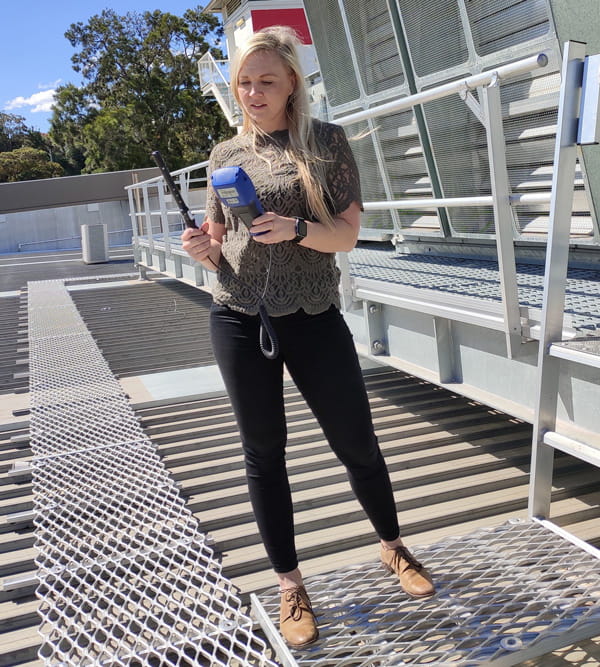
Expanding the avenues for impact using NABERS
WELL Certification and NABERS Indoor Environment crosswalk announced
In FY20 we announced our latest alignment with international building standards. NABERS Indoor Environment ratings can now be used as inputs for WELL certification, recertification and annual monitoring to save time and add extra value to buildings.
This crosswalk is a logical fit, as NABERS Indoor Environment and the WELL rating systems share many characteristics, such as third-party testing by accredited and trained professionals, detailed testing protocols, including determining sampling locations, utilising proper equipment, and completing rigorous auditing procedures. NABERS Indoor Environment measurements or scores can be used to achieve a WELL v2 feature during initial WELL certification, annual monitoring and/or WELL recertification.
The new streamlined pathway enables building owners to get dual certifications or ratings under WELL and NABERS Indoor Environment.
We’ve seen positive results for Indoor Environment during the FY20 year, with 21.9% more office buildings rated and 56.8% more ratings of 5 Stars and above. It’s clear that tenants are increasingly prioritising health and wellbeing of their office workers, so the NABERS and WELL collaboration comes at just the right time.
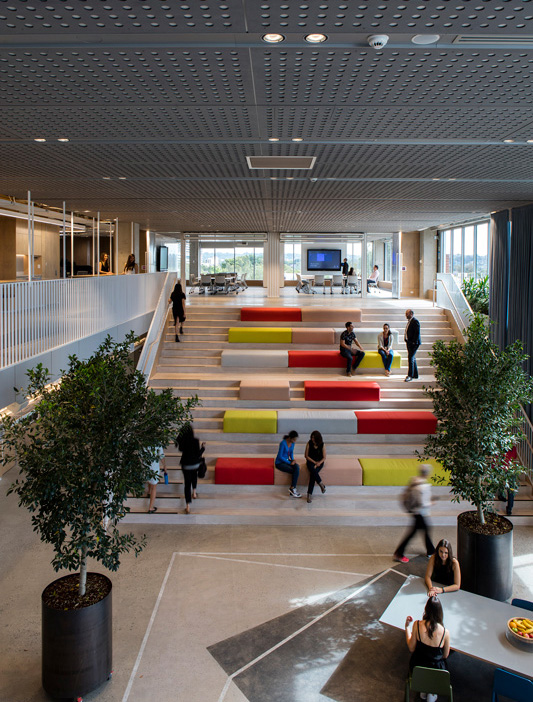
Caption: Photo supplied by Frasers Property Australia
NABERS Accelerate launched into new sectors
As part of our commitment towards meeting the Australian government's 2050 net zero emissions targets, we're bringing NABERS to more building sectors to accelerate our transition.
NABERS Accelerate is a program provided to new sectors to speed up the development and adoption of NABERS ratings in new sectors. During FY20, following extensive industry consultation we identified focus sectors for expansion based on market potential, environmental impact and technical feasibility. These sectors were residential aged care and retirement living, public and private schools, warehouses and cold stores.
The NABERS Accelerate tool was developed through collaboration with leading organisations using targeted interviews, working groups, and advisory panels. These organisations generously provided site characteristic and annual energy and water use data. Using this data, our team developed the NABERS Accelerate platform which is pivotal for technical benchmarking in developing the new NABERS ratings.
Next year we will pilot a NABERS rating product for one of these new sectors in June 2021, followed by the other two sectors in succession. The addition of these new sectors will almost double the coverage of NABERS ratings (by potential emissions impact).
NABERS aims to expand to all major building types by 2024. We look forward to announcing the next set of sectors for expansion in 2021.

Playing a key role in the nation's transition to Net Zero
NABERS Energy adapted to account for electricity changes
Our ‘Future of NABERS Energy’ project will ensure NABERS remains rigorous, accurate and effective in this ‘decade to deliver’. In 2019 and 2020, we have made significant progress in adapting the NABERS Energy tool to transformations such as the decarbonisation of the grid and the rise in net zero emissions targets.
Putting our NABERS tool integrity at the forefront, we consulted extensively with a dedicated Technical Working Group, the NABERS National Steering Committee, and interested stakeholders to ensure rigour. Topics included:
- Update to the emissions factors used in NABERS
- Recognition for net zero emissions
- Enhanced recognition for renewable energy purchases
- Aligning to the Greenhouse Gas Protocol’s market-based carbon accounting method
- Recognition of a greater breadth of renewable energy purchasing methods
Two important announcements were made in FY20:
- In July 2021, we will update the emissions factors (National Greenhouse Accounts or NGA) factors, which we use in NABERS Energy ratings to compare the emissions associated with different energy sources. This will affect all building types. We will then continue to review and update emissions factors periodically.
- We will also be updating the NABERS Energy with GreenPower calculation to include key aspects of the international greenhouse gas accounting method for electricity. As an example, the renewable energy in the grid from the RET (Renewable Energy Target) will already be considered as renewable energy in the NABERS Energy with GreenPower rating. That means that to be considered as procuring 100% renewable energy in a NABERS Energy with GreenPower rating, GreenPower will only need to be purchased for approximately 80% of the total energy consumption, as in 2020 the Renewable Power Percentage was 19.31%. We are reviewing the NABERS Energy with GreenPower rating and expect these changes to come into effect towards the end of 2021.
Find out more about the Future of NABERS Energy project.
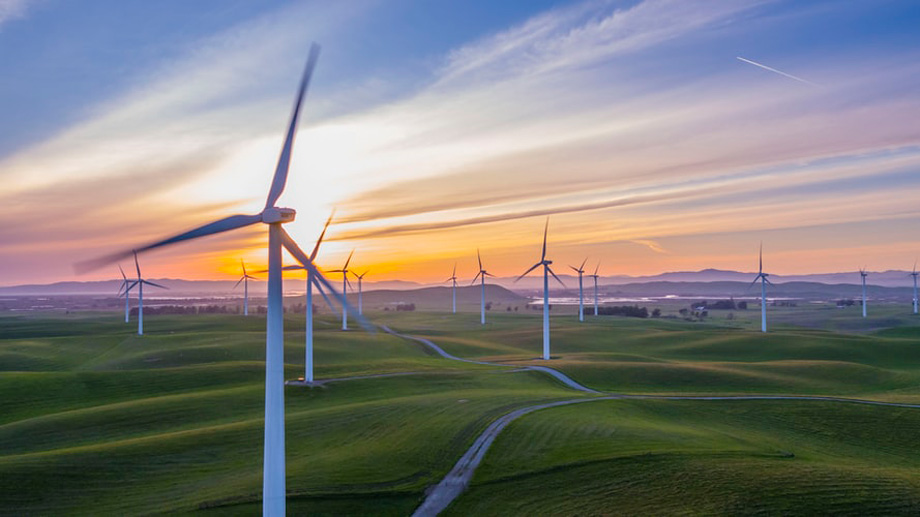
Net zero pathways aligned to state strategies
The built environment is responsible for almost half of Australia’s emissions, and NABERS is the world’s most effective rating tool in terms of rapid, dramatic emissions reduction. Our pivotal role in NSW and Australia’s net zero strategies has never been more critical.
In March 2020, the NSW Government announced The Net Zero Plan. The Plan will grow the NSW economy, create jobs and reduce the cost of living from emissions reduction initiatives. The Plan is the most comprehensive fully funded plan in the nation to achieve our net zero emission goals. The Plan outlines how NSW will reduce emissions by 35% by 2030, which is the first stage of transition to net zero emissions by 2050.
NABERS ratings are the backbone of driving the emissions reductions of the built environment towards the 2030 and 2050 targets.
Towards a better future for the built environment
In FY20, we have expanded our customer community, deepened our relationships with new partners, and have been established as a tool to achieve net zero targets for the built environment. There is so much more still to do. NABERS is energised by its many partnerships both in Australia and internationally. We look forward to another year of great strides forward, towards built environment sustainability.

